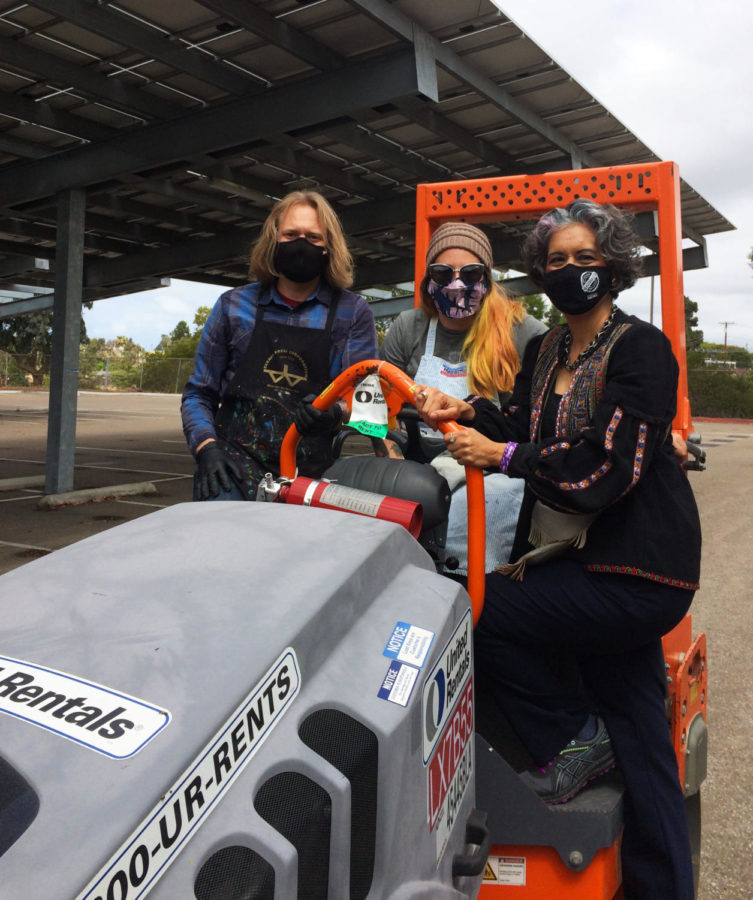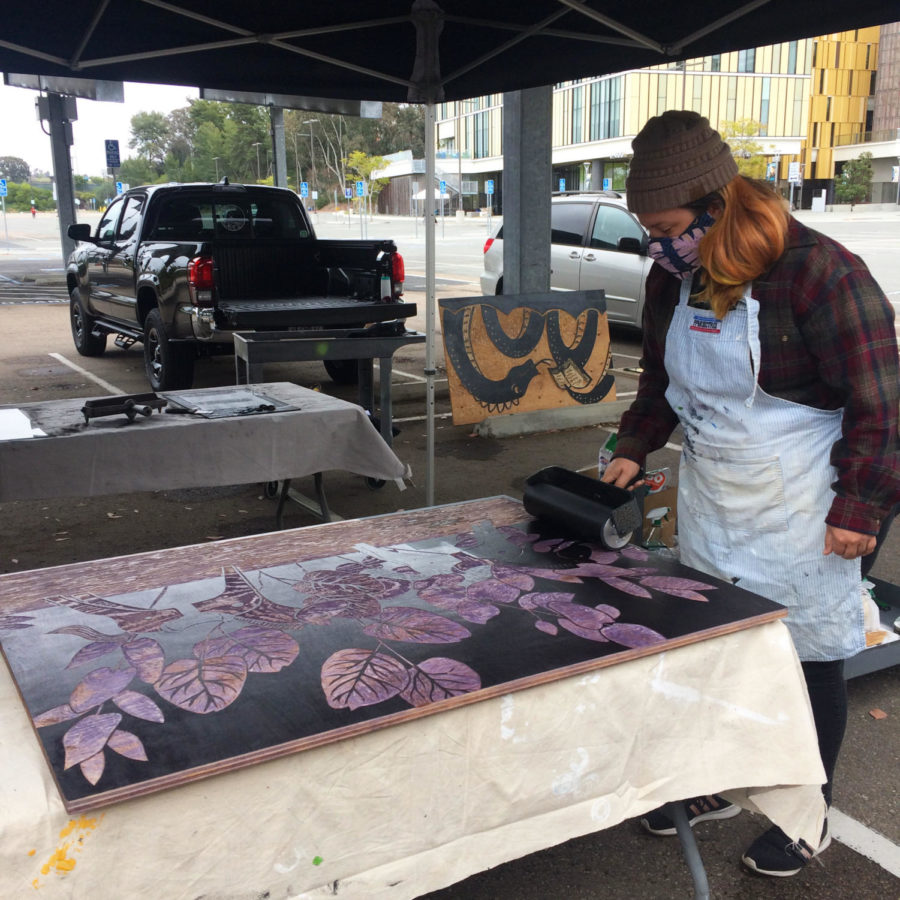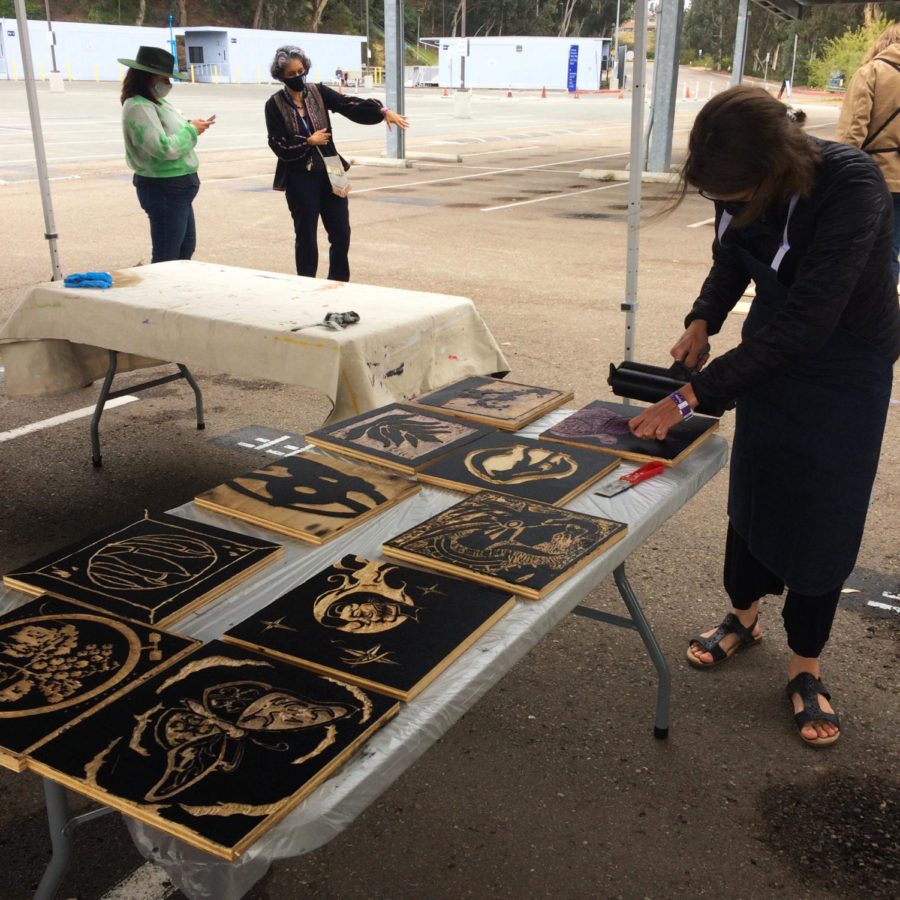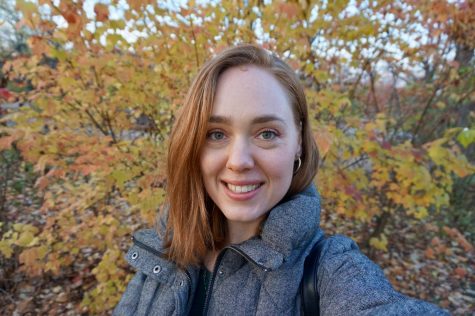In a Mesa parking lot on April 21, a steamroller rumbled to life, ready to press large-scale prints for an upcoming event at the Mesa Art Gallery. Not even gray skies or an earlier morning drizzle could dampen the excitement of the small group gathered there.
“Heavy Duty: A Steamroller Printmaking Exhibition,” will open to the public starting May 7 and will feature fabric prints by local artists as well as two prints with designs from Mesa students. The artwork will be displayed along a chain-link fence for the drive-thru exhibit.
The event has been weeks in the making and was conceived and brought to life by Gallery Director Alessandra Moctezuma and Gallery Coordinator Jenny Armer, under the guidance of local artist and ‘master printer’ Chris Lahti. This event is part of an effort to revive interest in Mesa’s printmaking program.
Some prints are whimsical, some political. Each piece is pressed using an etching that many of the contributing artists said took several hours, over several days, to carve. They used hand tools or power tools, working their designs into large 3’ x 5’ pieces of plywood. Printmaking is, at its core, a very simple concept: you carve a block of wood, linoleum, or E-Z-Cut material, roll ink on the surface, apply fabric or paper, and then use a printing press to help transfer the relief print. The innovation behind this particular project, however, is not only the size of the blocks but the use of a steamroller, the kind that paves asphalt, to get the job done.
“The printing isn’t that different from a large etching press,” explained Lahti. “The principles are pretty similar.” This creative technique illustrates how versatile you can get with the art form. The magic of printing is that no two prints are alike, he added. Each set of circumstances, from the amount of ink laid down to the pressure applied, results in a different look and feel to the art.
Mesa used to have “a wonderful printmaking program,” Moctezuma explained, but when faced with building issues and instructor Jim Machacek’s retirement, interest and momentum in the program waned. Moctezuma added that she hopes to reinvigorate faculty, staff and students to the exciting possibilities of this art form. Those possibilities are showcased in the amazing work done by the artists as well as the unique printing process which was livestreamed and recorded on the gallery’s Facebook page.
The 16 artists involved are all skilled printmakers, bringing a diverse range of techniques and imagery to the collection. The artists are Trevor Amery, Jenny Armer, Jennifer Anne Bennett, Brian Gibson, Wendell Kling, Chris Lahti, Mary Manusos, Jim Melli, Morgan Miller the III, Yvette Roman, Sibyl Rubottom, Katie Ruiz, Jose Hugo Sanchez, Katy Yeaw, Samantha and Ty Creighton.
Also participating is professor Wendell Kling’s drawing class, contributing 24 smaller blocks. Kling noted that this project was a chance to bring together many of the formal elements his students were learning about this semester, from line and value to texture and shading. “Thinking about composition and how elements fit together is important,” added Kling. When carving the material, Lahti stressed that it’s not the initial etching you have to focus on, but how that etching will translate itself to the final print.
One of Kling’s students, who introduced herself as Tanya, carved an intricate and detailed image of a Ukrainian stitching technique on her block, working a self-estimated ten hours over several days she said. While it was a new experience for her, she added that she liked the patience that came with learning the hands-on craft and taking the time to “do something new for myself.” Tanya donned an apron and got messy with the crew, rolling ink on various blocks and helping to create several prints.
When asked about the importance of community colleges providing printmaking opportunities, Lahti explained that while it’s possible to do smaller prints at home, “with the facilities offered by institutions, you have greater abilities and are more easily able to have ambitious projects.” He was first exposed to printmaking during his freshman year in college, he added, and that is where his life-long passion for it began.
Students raised in a digital world, said Moctezuma, “are wanting to go back to those hands-on techniques and to actually make things.” Printing, she added, “is such a fun technology–it’s just magic.” That magic is what they hope to share with everyone as they invite you to join them for the masked, drive-thru reception on May 7 at 3-5 p.m. The exhibit is free for all and will remain up until the end of the month.
Further details can be found at Mesa College Art Gallery.




